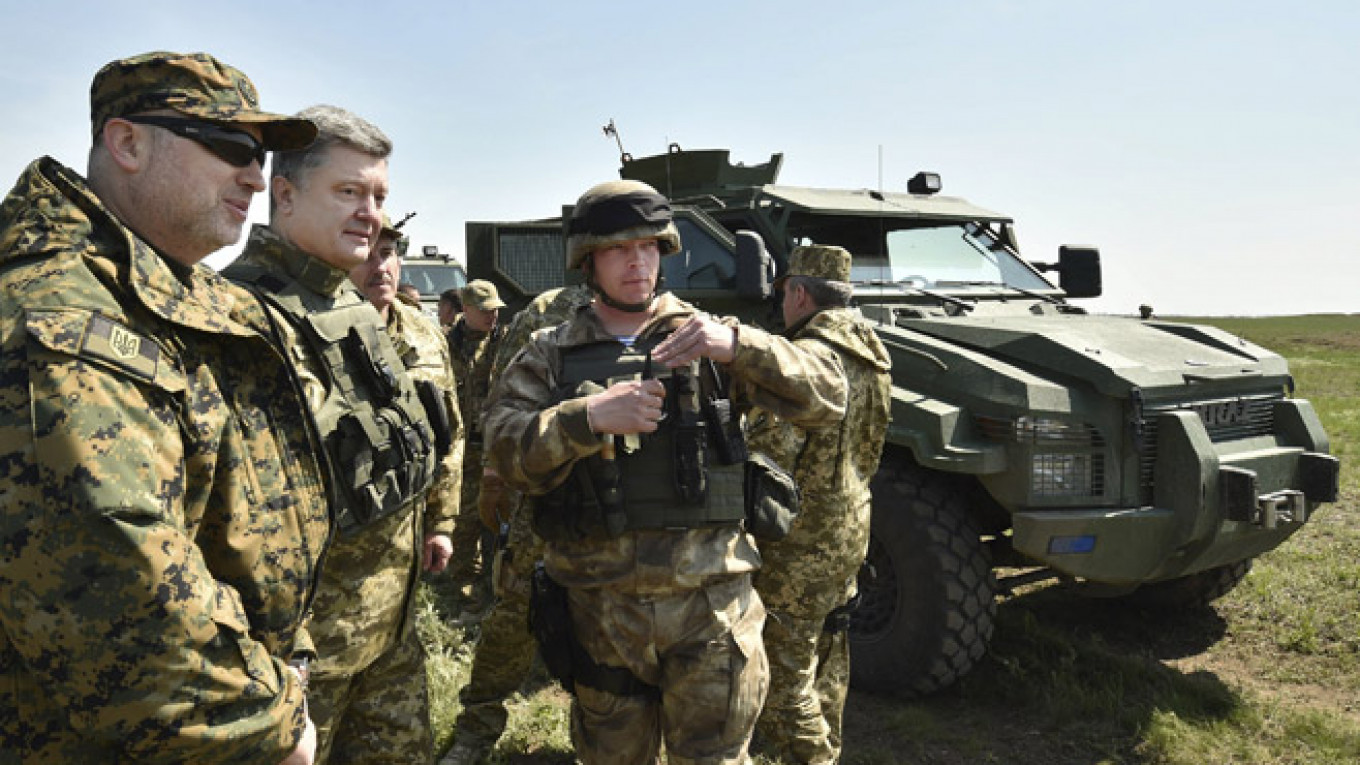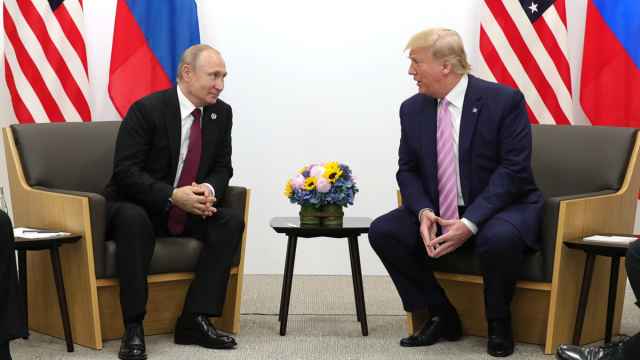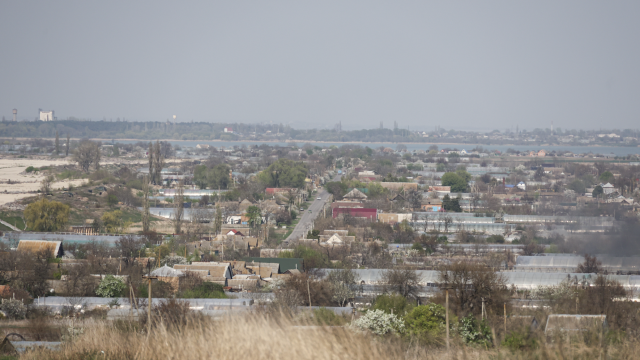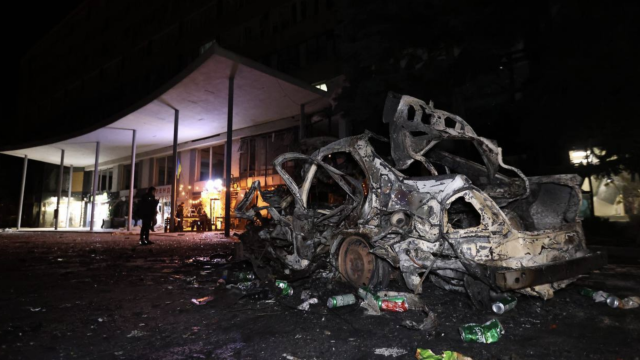Buried over 600 pages deep into the 2016 U.S. military budget, which was approved by the House of Representatives last week, is a small section authorizing $200 million in military aid to Ukraine's beleaguered armed forces.
President Barack Obama is expected to veto the bill after House Republicans ignored spending caps and dumped money into an emergency war chest, but a U.S. defense bill will eventually be signed into law.
If the $200 million earmarked for the Ukrainian military survives into the law's final version, the U.S. Department of Defense will be authorized to spend the money on training Ukrainian soldiers in the basics of war and on defensive weapons for an army outfitted with desperately outdated equipment.
The assistance is meant to help Kiev defend itself against future attacks if an unsteady cease-fire with pro-Russian forces in eastern Ukraine collapses into renewed conflict, and promotes "the conditions for a negotiated settlement to end the conflict," according to section 1532 of the bill.
What Does Ukraine Need?
The aims of section 1532 sound remarkably similar to those forwarded by a February report published by influential U.S. think tanks the Atlantic Council, the Brookings Institute, and the Chicago Council on Global Affairs.
In the report, prominent experts in the Washington policy community argued for the United States to provide $1 billion in lethal and non-lethal defensive military aid per year for the next three years to raise the cost for any future Russian interventions in Ukraine.
Moscow has denied that it has sent troops or equipment into eastern Ukraine.
While the government declined to commit to $1 billion, the $200 million for 2016 will increase Ukraine's defense abilities — but will not shift the odds in Kiev's favor if it engages in an all-out war with Russia.
Former U.S. Ambassador Steven Pifer, an author of the February report, told The Moscow Times that Ukraine is asking for "counter-battery radars, unmanned aerial vehicles [and] light armored weapons," among other things.
As it turns out, $200 million could give them those units, but section 1532 provides for something that though less tangible is perhaps more important — training.
Training Programs
The U.S. military has already deployed 300 army instructors to Ukraine as part of a $19 million program authorized last year to teach untrained Ukrainian grunts the basic laws of combat, The New York Times reported earlier this month.
In 63 courses being run as part of a six-month program, 703 soldiers are receiving crash courses in using encrypted walkie-talkies, cutting barbed wire — an incredibly important skill in modern warfare — and how to pull wounded comrades out of a combat zone while holding their rifles at the ready, the Times reported.
While the U.S. defense bill does not specify how much of the $200 million earmarked for Ukraine will be used for training, the U.S. military is not shouldering the burden of instructing the country's undertrained troops to wage war alone. Western allies such as Canada and Britain have deployed over 200 of their own trainers as well.
Defensive Weapons
Though training may be the most valuable aid the U.S. can give Ukraine in the low-intensity, sporadic conflict that has come to characterize the fighting in the nation's restive east, Ukraine also needs a few types of defensive weapons to boost its edge.
Ben Moores, a senior analyst at international defense consultancy IHS, shared his $200 million shopping list with The Moscow Times. It is a list that focuses exclusively on defensive weapons and hardware that Kiev's forces need, but "can't make effectively."
According to Moores, $45 million could be spent to purchase 200 anti-tank missiles. The tanks being used by the eastern Ukrainian separatists are plastered in reactive armor that explodes outward when a rocket strikes — greatly mitigating or outright deflecting the projectiles currently used by the Ukrainian army.
Giving Ukraine more advanced anti-armor weapons would go a long way to boosting Kiev's defensive capabilities if the rebels made an armored push further into its territory.
Another problem that Kiev needs to overcome is locating rebel infantry and artillery positions. Two types of hardware could be purchased with the U.S. aid money that would contribute to these efforts.
The first are tactical unmanned aerial vehicles (UAVs). For $65 million Ukraine could buy 12 such drones, outfitted with synthetic aperture radars — high-tech imaging equipment that maps out in 3-D objects and terrain in its field of vision.
The drones would help Kiev's forces track rebel movements behind their lines and get a better sense of where things are located and where they are coming from.
For $80 million, Ukraine could buy five counter-battery radar systems, which analyze the trajectory of incoming projectiles fired by mortars, rocket launchers and artillery guns and trace them back to their point of origin.
This would allow Ukraine's military to know in real time where they are being shelled from, and quickly muster counter attacks to neutralize the rebel batteries.
Together, these purchases would bolster Ukraine's position against the rebel fighters. But against the huge Russian military that Kiev and the U.S. say stands behind the separatists, they would likely have little impact.
Contact the author at m.bodner@imedia.ru
A Message from The Moscow Times:
Dear readers,
We are facing unprecedented challenges. Russia's Prosecutor General's Office has designated The Moscow Times as an "undesirable" organization, criminalizing our work and putting our staff at risk of prosecution. This follows our earlier unjust labeling as a "foreign agent."
These actions are direct attempts to silence independent journalism in Russia. The authorities claim our work "discredits the decisions of the Russian leadership." We see things differently: we strive to provide accurate, unbiased reporting on Russia.
We, the journalists of The Moscow Times, refuse to be silenced. But to continue our work, we need your help.
Your support, no matter how small, makes a world of difference. If you can, please support us monthly starting from just $2. It's quick to set up, and every contribution makes a significant impact.
By supporting The Moscow Times, you're defending open, independent journalism in the face of repression. Thank you for standing with us.
Remind me later.






